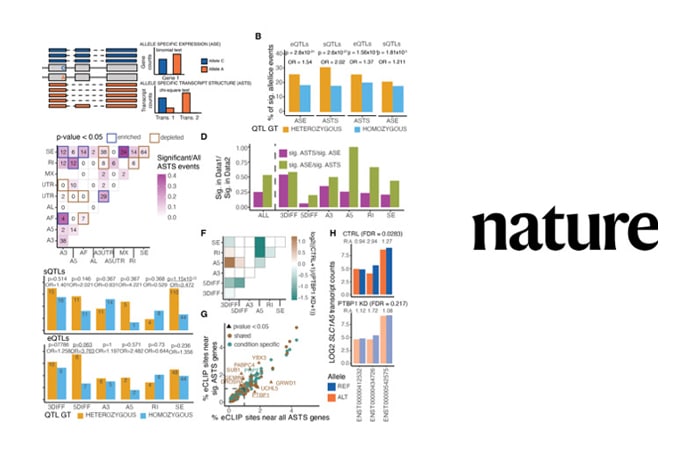Expression of different forms of genes in human tissues has been mapped at unprecedented depth using emerging sequencing technology
Research on RNA diversity in human tissues, led by scientists from the New York Genome Center and the Broad Institute, is described in a recent study published in Nature. When the genetic code is transcribed to RNA, one gene typically produces several different forms of RNA molecules, or transcripts, with different functions. While this phenomenon has been known for decades, the catalog of human transcripts has remained incomplete.

(l-r) Study Authors: Professor Tuuli Lappaleinen, Dr. Dafni Ginos, and Dr. Beryl Cummings
“Equipped with the latest sequencing technology, we were able to read segments of over one thousand nucleotides, compared to less than one hundred with standard approaches”, describes Dr. Beryl Cummings, one of the leaders of the project and formerly a postdoctoral fellow at the Broad Institute. “Importantly, we were able to do this at scale of over 80 samples from many tissues, which led to discovery of tens of thousands of novel transcripts,” she adds.
The researchers used their data to characterize how genetic and environmental differences can manifest in differences in the transcriptome. “Genetic differences between individuals can affect how genes are regulated. We were able to describe with a finer resolution than before how transcript structures are affected. This helps to understand molecular underpinnings of variants that contribute to disease risk,” explains Dr. Dafni Glinos from the New York Genome Center and co-first author of the study.
“We believe the discoveries, data, and tools we present pave the way for a new era of transcriptome research. About a decade ago, high-through analysis of small DNA or RNA segments revolutionized genomics. I think we’re at the cusp of a new revolution with long read sequencing,” says Professor Tuuli Lappalainen from the New York Genome Center and one of the leaders of the study.
About the New York Genome Center
The New York Genome Center (NYGC) is an independent, nonprofit academic research institution that serves as a multi-institutional hub for collaborative genomic research. Leveraging our strengths in technology development, computational biology, and whole-genome sequencing and analysis, our mission is to advance genomic science, and its application to novel biomedical discoveries. NYGC’s areas of focus include the development of computational and experimental genomic methods and disease-focused research to advance the understanding of the genetic basis of cancer, neurodegenerative disease, and neuropsychiatric disease. Since 2020, the NYGC has worked with its hospital and academic partners to advance COVID-19 research, whole genome sequencing over 12,000 viral samples to discover new viral variants and explore the genetic basis of severe disease.
Institutional founding members are: Cold Spring Harbor Laboratory, Columbia University, Albert Einstein College of Medicine, Memorial Sloan Kettering Cancer Center, Icahn School of Medicine at Mount Sinai, New York-Presbyterian Hospital, New York University, Northwell Health, The Rockefeller University, Stony Brook University, and Weill Cornell Medicine. Institutional associate members are: American Museum of Natural History, Hospital for Special Surgery, Georgetown Lombardi Comprehensive Cancer Center, Hackensack Meridian Health, The New York Stem Cell Foundation, Princeton University, Roswell Park Cancer Institute and Rutgers Cancer Institute of New Jersey. For more information on the NYGC, please visit: nygenome.org
Scientific Contacts:
Prof. Tuuli Lappalainen
tlappalainen@nygenome.org
+1-9177532661 or +46-721940550
Dr. Dafni Glinos
dafni.glinos@gmail.com
+44-7564001951
Dr. Beryl Cummings
berylbcummings@gmail.com
+19197256320
